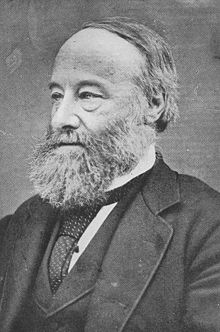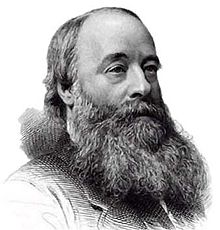James Prescott Joule
James Prescott Joule | |
|---|---|
 James Joule – Physicist | |
| Born | 24 December 1818 Salford, Lancashire, England |
| Died | 11 October 1889 (aged 70) Sale, Cheshire, England |
| Citizenship | British |
| Known for | First Law of Thermodynamics |
| Scientific career | |
| Fields | Physics |
| Influences | John Dalton John Davies |
James Prescott Joule (24 December 1818 – 11 October 1889) was an English physicist, born in Salford, near Manchester. In his time he had great contribution to the world of electricity and thermodynamics. He was best known for discovering Joule's law, which described electric heating by saying the amount of heat produced each second in a conductor by a current of Electricity is proportional to the resistance of a conductor and to the square of the current. The unit for this is joule, equal to one watt-second. Later Joule worked with William Thomson to find out that the temperature of gas falls as gas expands. This principle was then known as the Joule-Thomson effect.
Early life[change | change source]

The son of Benjamin Joule (1784–1858), a wealthy brewer, James Prescott Joule was born in the house next to the Joule Brewery in New Bailey Street, Salford on 24 December 1818.[1] James was tutored at the family home 'Broomhill', Pendlebury, near Salford, until 1834 when he was sent, with his elder brother Benjamin, to study with John Dalton at the Manchester Literary and Philosophical Society.[1] They only received two years of education in arithmetic and geometry before Dalton was forced to retire because of a stroke.
Kinetic theory[change | change source]

Kinetics is the science of motion. Joule was a pupil of Dalton and it is no surprise that he had learned a firm belief in the atomic theory, even though there were many scientists of his time who were still skeptical. He had also been one of the few people receptive to the work of John Herapath on the kinetic theory of gases. He was further greatly influenced by Peter Ewart's 1813 paper On the measure of moving force.
References[change | change source]
- ↑ 1.0 1.1 Hulme, Charles (2010). "John Cassidy:Manchester Sculptor". John Cassidy 150th Anniversary website. Retrieved 22 March 2010.
